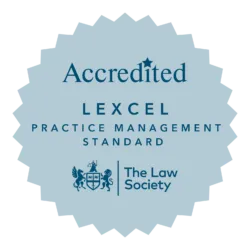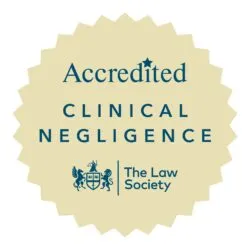
Deep Vein Thrombosis (DVT) Awareness Month
Our experienced medical negligence solicitors are using the month of March to highlight awareness of DVT and blood clots.
What is Deep Vein Thrombosis (DVT)?
Deep Vein Thrombosis (DVT) occurs when a blood clot forms in the deep vein, most often the leg, resulting in partially or completely blocked circulation.
If left untreated, about 1 in 10 people with a DVT will develop a Pulmonary Embolism (PE). A Pulmonary Embolism (PE) is a serious condition that occurs when a piece of the blood clot breaks off into the bloodstream and then blocks one of the blood vessels in the lungs. If it is not treated quickly, it can be life-threatening.
DVT and PE together are known as venous thromboembolism (VTE).
Both DVT and PE require urgent investigation and treatment.
What are the Symptoms of Deep Vein Thrombosis?
In some cases, there may be no symptoms of DVT. If symptoms do occur, they can include:
- pain, swelling and tenderness in one of your legs (usually your calf or thigh);
- abnormally hot skin in the affected area;
- discolouration, pale, red or darkened skin over the area affected; and
- swollen veins that are hard or sore on touch.
The NHS recommends emergency medical treatment where the above symptoms are associated with breathlessness and chest pain.
Who’s at Risk of Deep Vein Thrombosis?
A DVT is more likely to occur if you:
- are over 60 years old;
- are a smoker;
- take the contraceptive pill or are undergoing hormone replacement therapy (HRT);
- are overweight;
- have long periods of immobility/ reduced mobility (such as a long journey which is more than 3 hours);
- are pregnant or have had a baby in the previous 6 weeks;
- have cancer or heart failure;
- have varicose veins;
- are dehydrated.
What’s the Treatment for Deep Vein Thrombosis?
Treatment for DVT usually involves taking anticoagulant medicines. These reduce the blood’s ability to clot and stop existing clots getting bigger.
Compression stockings are also prescribed to be worn every day, to help prevent calf pain and swelling and lower the risk of ulcers developing after having a DVT.
How to Recover from Deep Vein Thrombosis?
Generally, lifestyle measures are recommended to help with recovery from DVT and to help prevent DVT returning or complications developing. The NHS recommends that DVT sufferers:
- walk regularly;
- keep the affected leg/ limb raised when sitting;
- avoid long journeys until at least 2 weeks after starting anticoagulant medicine
Things You Should Do When You Have DVT:
- stay active/ take regular exercise;
- drink plenty of fluids to avoid dehydration;
- maintain a healthy weight or lose weight if obese;
- speak with the GP before embarking on long-distance travel if at risk of getting a DVT, or have suffered a DVT in the past.
Things You Shouldn’t Do When You have DVT:
- avoid sitting for long periods of time- ensure enough time for breaks to move around;
- do not smoke;
- avoid crossing legs when sitting;
- avoid drinking large volumes of alcohol.
Medical Negligence Solicitors
Morrish Solicitors have experience in dealing with clinical negligence claims relating to failures to diagnose and appropriately treat DVT and PE. We understand the serious impact this can have on long term health and in some cases this can be fatal.
If you believe you may have a clinical negligence claim following a DVT or PE please contact our specialist team of medical negligence solicitors on 033 3344 9600 or email [email protected]. Our team of medical negligence specialists will be happy to discuss your options in detail.










